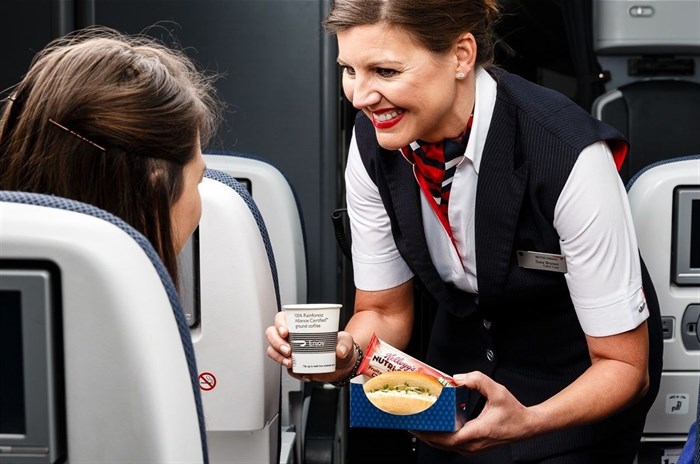
However, it’s all about how you define a golden era says Sue Petrie, British Airways’ commercial manager for Southern Africa. The fact is that very few people experienced air travel when it was customary to dress up to do so. Relatively speaking, flying was much more expensive than it is now and most breadwinners simply couldn’t afford it.
“The Boeing 747 changed that: The Jumbo made long-haul air-travel more affordable and the choice of seating-classes expanded. Backpackers in search of themselves could fly economy-class to exotic places on a shoestring as easily as the more well-heeled folk sipping single-malt up front. International business travel became commonplace and people in cold, dark countries could fly overnight to tropical climes and warm seas.”
Research and innovation have continued as manufacturers aim for more efficient aircraft that improve customer experience, lower carbon emissions and quicker turnaround. The new Boeing 787-800 Dreamliner, for instance, uses 20% less fuel than a similarly-sized 767, with 60% less engine-noise.

“British Airways invests heavily in improvements to the customer experience, like the new seats and in-flight entertainment systems in the airline’s refreshed Boeing 777 fleet. Customers in the World Traveller and World Traveller Plus cabins will note entertainment screens that are 50% bigger and have swipe control, enabling the user to navigate the interface like using a tablet. The new seats offer better legroom and the headrests can be adjusted to suit customers of all heights,” says Petrie.
The seats have built-in USB charging sockets, a cocktail table and a tray table in the armrest. Fine bedding from The White Company (in Club World) and improved and expanded food offerings have been phased in. There’s a far greater variety of snacks on long-haul flights, for example. Wi-Fi will be available on short and long-haul flights within the next two years.
"But some of the most noteworthy improvements might go unnoticed. You might feel that you arrive at your destination feeling fresher and more focused than you would on another airline, but you can’t work out why. That’s because bespoke lighting has been fitted in each cabin and can be adjusted to reflect the time of day, helping to lull you to sleep at night and wake up in the morning, lessening the effects of jet-lag.
"Another reason for feeling better during and after the flight will also remain unseen by customers: The carbon-composite fuselage in the Boeing Dreamliner for example, enables the cabins to be more pressurised, with more moisture than before. As aircraft manufacturers’ understanding grows of how air-travel affects the human body, so airline manufacturers have applied that knowledge to make air-travel more pleasant," adds Petrie.
Petrie explains that historically, the air inside an airliner cabin has been kept very dry to prevent corrosion. This might lead to occupants’ airways drying out and their senses of taste and smell being suppressed. That’s why your food may taste bland at 35,000 feet. Boosting the flavour and jacking up herbs and spices has helped, but breathing air that’s more like what you’d breathe at home improves the taste of your food and drink.
"In the last century or so, humankind has bounded forward, from silk-and-balsa aircraft to steel, which was possible when Boeing perfected arc-welding of light steel tubing in the 1920s. This would enable replacement of biplanes with monoplanes and the innovation of pressurised cabins. Before cabin pressurisation, flight attendants were nurses, on hand to resuscitate passengers who fainted. Comfortable – even luxurious – air travel only became possible after World War Two and only became available to ‘average’ folk in 1969, so it really could be argued that the golden age of air travel has just arrived," concluded Petrie.